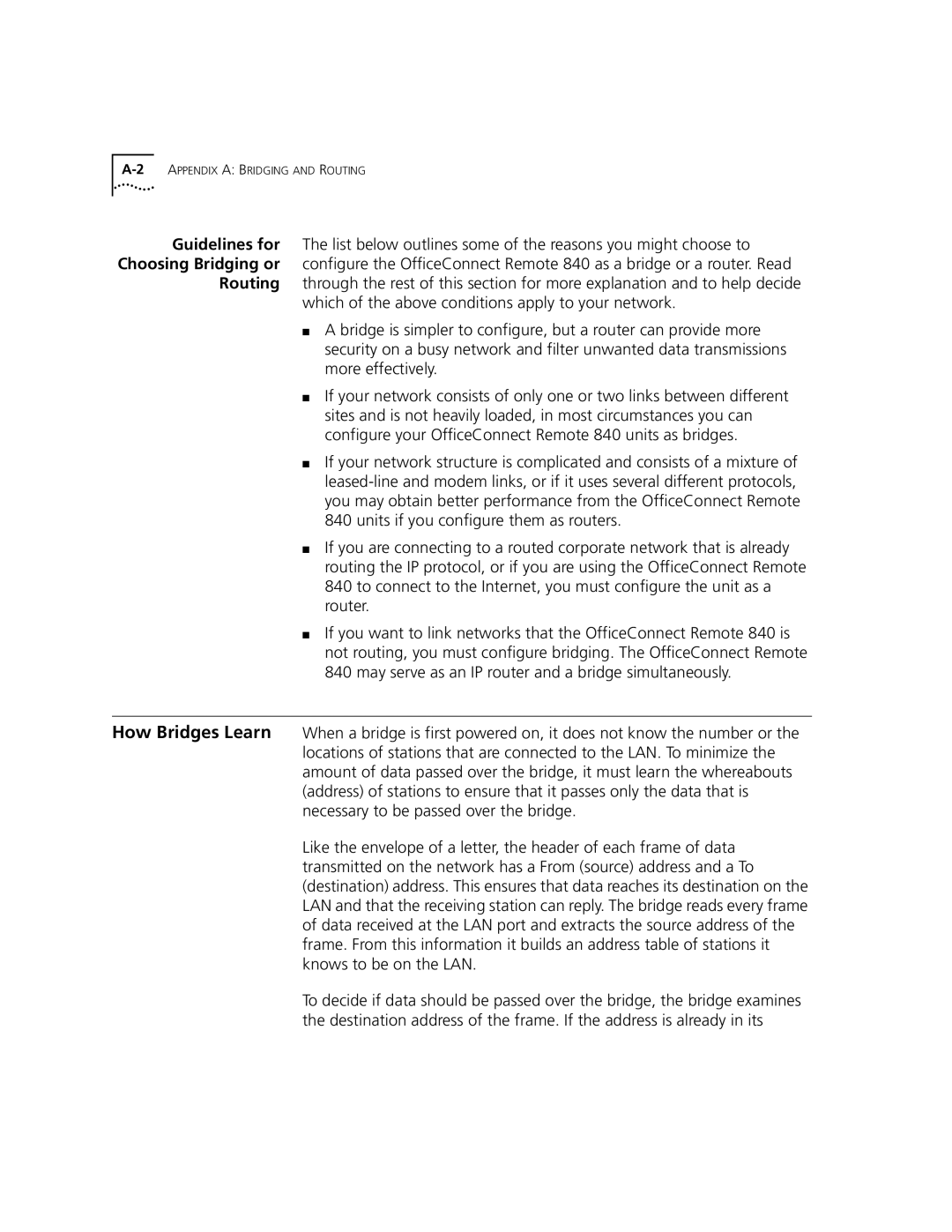
A-2 APPENDIX A: BRIDGING AND ROUTING
Guidelines for The list below outlines some of the reasons you might choose to Choosing Bridging or configure the OfficeConnect Remote 840 as a bridge or a router. Read
Routing through the rest of this section for more explanation and to help decide which of the above conditions apply to your network.
■A bridge is simpler to configure, but a router can provide more security on a busy network and filter unwanted data transmissions more effectively.
■If your network consists of only one or two links between different sites and is not heavily loaded, in most circumstances you can configure your OfficeConnect Remote 840 units as bridges.
■If your network structure is complicated and consists of a mixture of
■If you are connecting to a routed corporate network that is already routing the IP protocol, or if you are using the OfficeConnect Remote 840 to connect to the Internet, you must configure the unit as a router.
■If you want to link networks that the OfficeConnect Remote 840 is not routing, you must configure bridging. The OfficeConnect Remote 840 may serve as an IP router and a bridge simultaneously.
How Bridges Learn When a bridge is first powered on, it does not know the number or the locations of stations that are connected to the LAN. To minimize the amount of data passed over the bridge, it must learn the whereabouts (address) of stations to ensure that it passes only the data that is necessary to be passed over the bridge.
Like the envelope of a letter, the header of each frame of data transmitted on the network has a From (source) address and a To (destination) address. This ensures that data reaches its destination on the LAN and that the receiving station can reply. The bridge reads every frame of data received at the LAN port and extracts the source address of the frame. From this information it builds an address table of stations it knows to be on the LAN.
To decide if data should be passed over the bridge, the bridge examines the destination address of the frame. If the address is already in its
